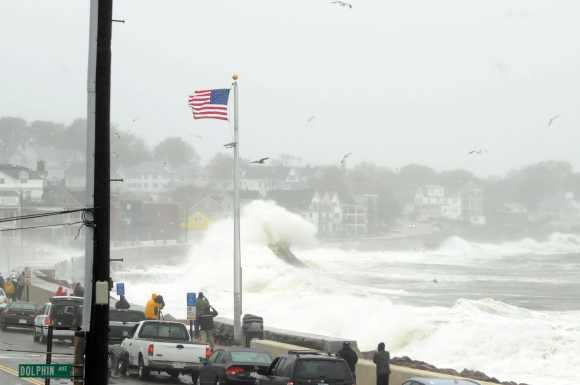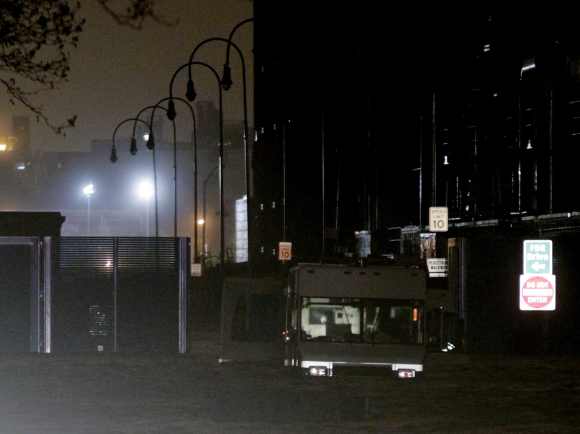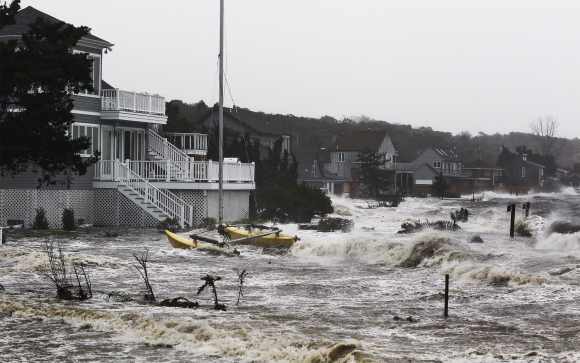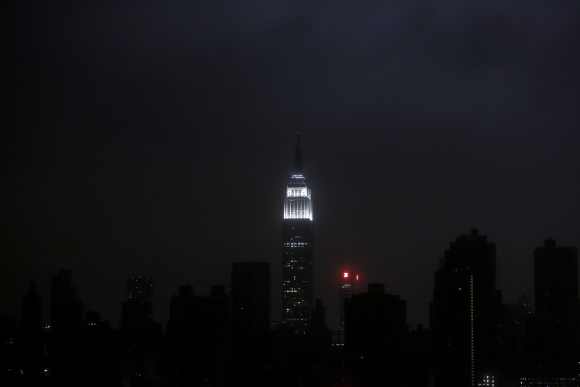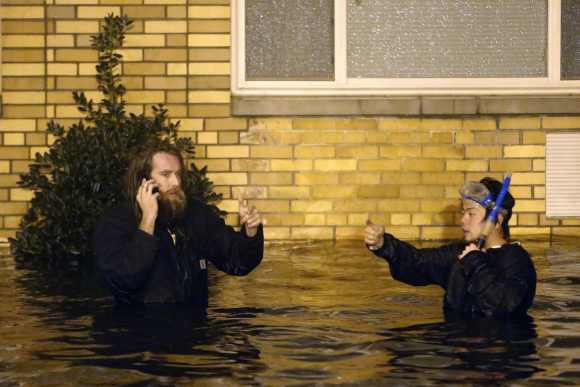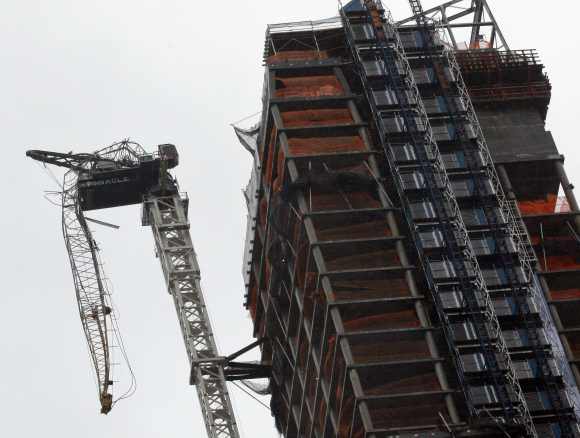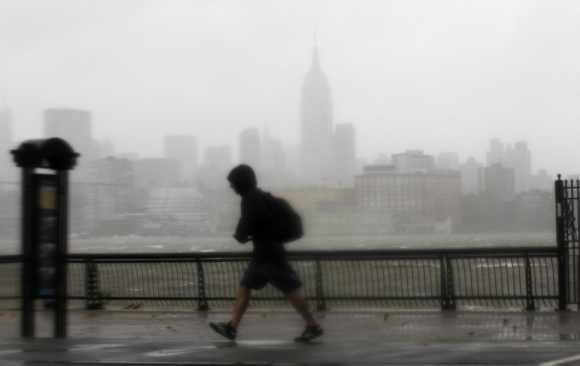 | « Back to article | Print this article |
Obama declares 'major disaster' as Sandy fury kills 17
Superstorm Sandy battered the United States East Coast on Tuesday with fierce winds and heavy rains, killing at least 17 people, plunging millions into darkness and leaving the New York Stock Exchange shut for two straight days for the first time since 1888, prompting President Barack Obama to declare it a 'major disaster'.
Sandy, one of the biggest storms ever to hit the US, slammed the coastline of New Jersey where a large number of Indian families reside, with 80 mph winds, pushing seawater up by an unprecedented 13-feet in New York City, and bringing the presidential campaign to a halt a week before the November 6 polls.
Click NEXT to read further...
Obama declares 'major disaster' as Sandy fury kills 17
Obama, who called off his campaigning activities on Monday to personally oversee the preparedness to the approaching megastorm, signed 'major disaster' declarations for New Jersey and New York. He ordered release of federal aid for those who lost homes or businesses.
Click NEXT to read further...
Obama declares 'major disaster' as Sandy fury kills 17
Republican challenger Mitt Romney also cancelled some his campaign appearances and turned his offices in some states into collection centres for storm relief supplies.
Click NEXT to read further...
Obama declares 'major disaster' as Sandy fury kills 17
Stock trading was closed in the US for a second day on Tuesday -- the first time the New York Stock Exchange remained closed for two consecutive days due to weather since 1888, when a blizzard struck the city.
Storm damage was projected at $10 billion to $20 billion, meaning it could prove to be one of the costliest natural disasters in US history.
Click NEXT to read further...
Obama declares 'major disaster' as Sandy fury kills 17
At least 17 deaths were reported from across seven states -- New York, New Jersey, Pennsylvania, Connecticut, Maryland, North Carolina and West Virginia. According to CBS News, three of the victims were children, one just 8 years old.
Click NEXT to read further...
Obama declares 'major disaster' as Sandy fury kills 17
Some of the victims were killed by falling trees. Dubbed as a Frankenstorm, Sandy left as many as 6.2 million people on the East Coast without power.
Floods inundated New York and New Jersey and an explosion at a sub-station in Manhattan left hundreds of thousands without power.
Click NEXT to read further...
Obama declares 'major disaster' as Sandy fury kills 17
"This will be one for the record books," said John Miksad, senior vice president for electric operations at Consolidated Edison station which was hit by the powerful blast leaving 670,000 customers without power in and around New York City.
"This is a Katrina-like warning we are issuing," said Connecticut's governor, Dannel Malloy urging people in one- story homes to move to roofs as he noted that thousands were stranded by rising water along the coastline of his state.
Click NEXT to read further...
Obama declares 'major disaster' as Sandy fury kills 17
The US Nuclear Regulatory Commission declared an alert at the Oyster Creek nuclear power plant in New Jersey, which is currently in a regularly scheduled outage, as the water level reached the minimum high level criteria.
"Water level is rising in the intake structure due to a combination of a rising tide, wind direction and storm surge. It is anticipated water levels will begin to abate within the next several hours," the NRC said.
Click NEXT to read further...
Obama declares 'major disaster' as Sandy fury kills 17
According to the NRC, no plants had to shut down as a result of the storm although several were already out of service for regularly scheduled refuelling and maintenance outages. All plants remain in a safe condition, with emergency equipment available if needed and NRC inspectors on-site.
The storm also flooded ground-zero, the site of the 9/11 terror attacks.
Authorities evacuated more than 200 patients and staff of a New York City hospital after its backup generator failed when the power was knocked out by the superstorm.
Click NEXT to read further...
Obama declares 'major disaster' as Sandy fury kills 17
Sandy is no longer a hurricane because it is drawing energy from temperature differences and not the ocean, making the transition to a superstorm that may push a wall of water ashore in the Northeast and lash the East with wind and rain.
The John F Kennedy airport in New York City and other airports in the region have been shut down with more than 13,000 flights being cancelled in the storm affected areas.
Sandy killed 69 people in the Caribbean before making its way up the Atlantic.
TOP photo features of the week
Click on MORE to see another set of PHOTO features...
